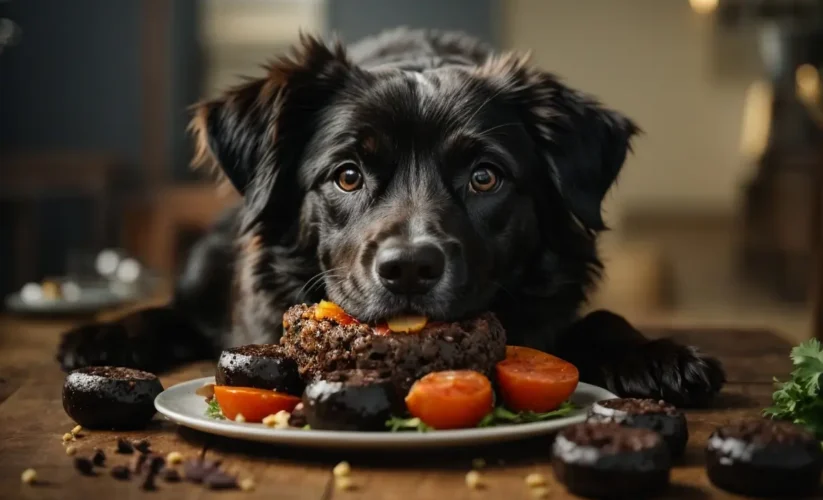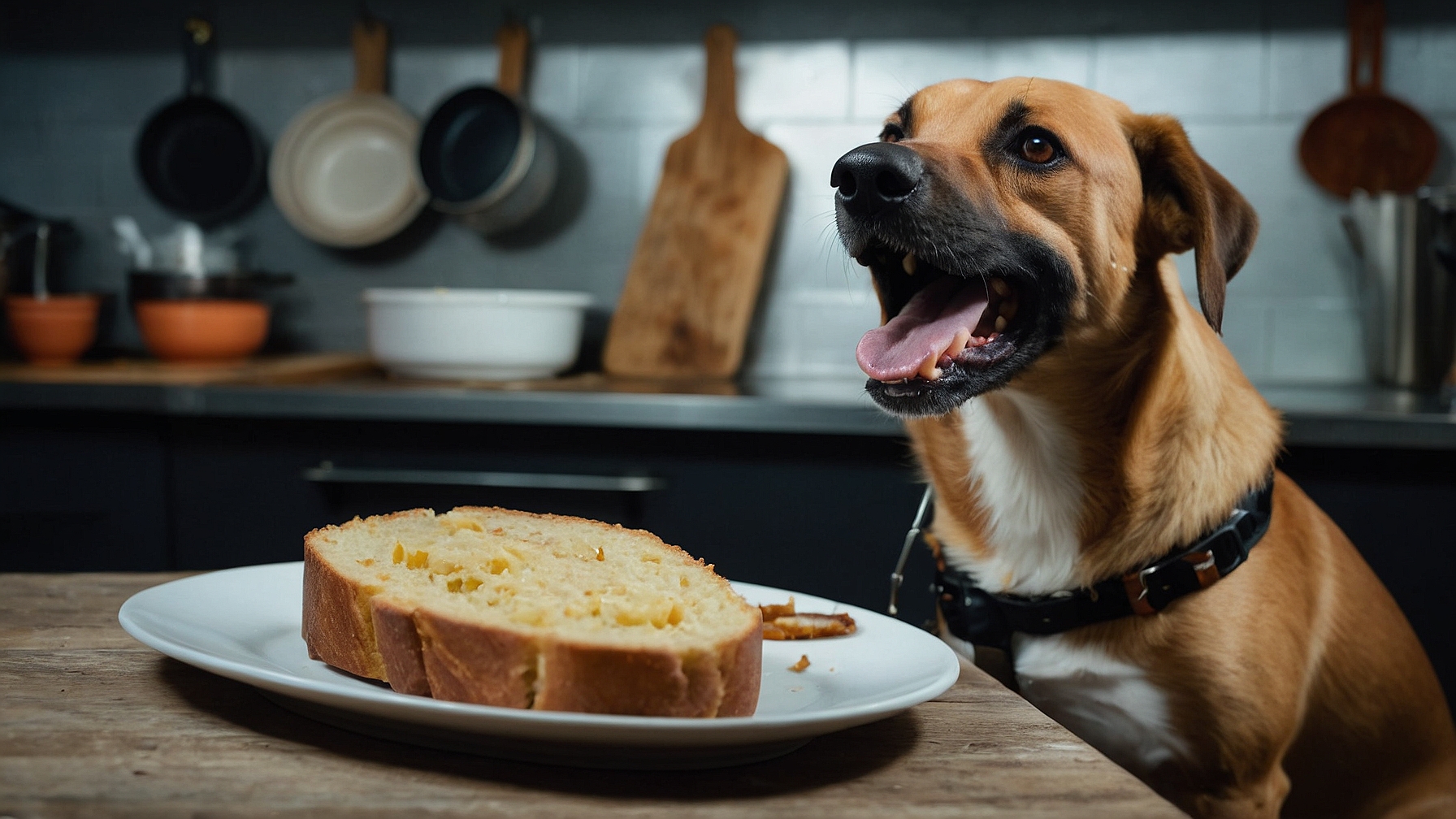Can dogs eat black pudding?

When it comes to our furry friends, every dog owner knows that a crucial part of keeping them happy and healthy is monitoring their diet. It’s not just about what we feed them regularly, but also about those little treats and extras that they might get from our plates. One such food that often raises the question ‘Can dogs eat black pudding?’ is black pudding, a traditional British and Irish delicacy. Known for its rich flavor and distinctive ingredients, black pudding is a type of blood sausage that is commonly included in a hearty breakfast. But the question arises: is black pudding a suitable treat for our canine companions? This blog post delves into the nutritional aspects of black pudding and its impact on a dog’s health. We’ll explore whether black pudding is good or bad for dogs, consider the safety of other similar British and Irish blood sausages, and offer some final thoughts for dog owners. As a dedicated dog blogger and owner, I bring my experience and research to the table, helping you make informed decisions about your dog’s diet.
Is Black Pudding Good for Dogs?
At first glance, black pudding might seem like a nutritious treat for dogs, primarily due to its high protein content. Protein is essential in a dog’s diet for the maintenance of healthy muscles and bodily functions. Black pudding is also rich in iron, which is crucial for blood health and energy levels. Additionally, it contains zinc and magnesium, minerals that are beneficial for a dog’s immune system and bone health. However, the suitability of black pudding as a dog treat is not just about the presence of beneficial nutrients.
One aspect to consider is the quality of the ingredients used in black pudding. High-quality black pudding made with natural ingredients and without harmful additives can be a more suitable option for occasional treats. However, dog owners should be cautious about the portion size. Due to its rich nature, black pudding should only be offered in small quantities to prevent digestive upset. Moreover, the cooking method of the black pudding is another factor to consider. Baked or boiled versions without added oils or seasonings are generally safer for dogs compared to fried or heavily spiced varieties.
While the nutritional profile of black pudding may have some positive aspects, the overall suitability for dogs depends on various factors including the dog’s individual health, dietary needs, and any existing medical conditions. It’s always recommended to consult with a veterinarian before introducing any new food into your dog’s diet, especially something as unique as black pudding.
Is Black Pudding Bad for Dogs?
Despite some potential nutritional benefits, there are also reasons why black pudding might not be the best choice for your dog, leading many to ask, ‘Can dogs eat black pudding?’ One of the primary concerns is the high fat content found in black pudding. Excessive fat in a dog’s diet can lead to pancreatitis, a serious and potentially life-threatening condition. Symptoms of pancreatitis include vomiting, diarrhea, abdominal pain, and lethargy. If your dog is overweight, diabetic, or has a history of pancreatitis, it’s particularly important to avoid high-fat foods like black pudding.
Another concern is the seasoning and additives often found in black pudding. Ingredients like onions and garlic, which are toxic to dogs, can sometimes be found in blood sausages. Additionally, high levels of salt and spices, which are not suitable for canine consumption, are commonly used in black pudding recipes. These ingredients can lead to gastrointestinal irritation and other health issues in dogs.
Moreover, the rich and heavy nature of black pudding can cause digestive upset in some dogs. Symptoms like diarrhea, vomiting, and stomach discomfort are possible, especially in dogs with sensitive stomachs or those not accustomed to such foods. It’s also worth considering that black pudding does not provide a complete and balanced diet for dogs. Relying on it or similar treats in large amounts can lead to nutritional imbalances and health issues over time.
Given these concerns, it’s crucial for dog owners to weigh the potential risks against the benefits. If you decide to give your dog black pudding, it should be done sparingly and with close observation for any adverse reactions. Always prioritize your dog’s overall health and dietary needs above the novelty of sharing human foods with them.
Are Other British and Irish Blood Sausages Safe for Dogs?
British and Irish cuisine features a variety of blood sausages, each with its unique recipe and ingredients. While black pudding is the most well-known, others like white pudding and haggis also raise questions about their suitability for dogs. The safety of these blood sausages for canine consumption largely depends on the same factors considered for black pudding.
Like black pudding, other blood sausages are typically high in protein and iron. However, they also share the same drawbacks, such as high fat content and the potential presence of harmful ingredients like onions,
garlic, and excessive spices. It’s important to note that each type of sausage has its own recipe, so the specific ingredients and their quantities can vary significantly. This variation means that while one type might be relatively safer, another could be more harmful.
White pudding, for instance, often contains less blood and more oatmeal or barley compared to black pudding. While this might reduce the iron content, it doesn’t necessarily make it a healthier choice for dogs, especially those with grain sensitivities or allergies. The high carbohydrate content in white pudding can also be an issue for overweight or diabetic dogs.
Haggis, another popular option, is made with sheep’s heart, liver, and lungs, mixed with oatmeal, suet, and seasonings. While the organ meats are rich in nutrients, the additional ingredients can be problematic. The high fat content from suet and potential for harmful seasonings mean that haggis should be offered with caution, if at all.
For any type of blood sausage, the same general guidelines apply: moderation is key, and the product should be as plain and natural as possible. Always remove any packaging or non-edible parts before offering a small piece to your dog. And, as always, it’s essential to monitor your dog for any signs of digestive upset or allergic reactions.
Final Thoughts
As a dog owner and blogger, I understand the desire to share our favorite foods with our pets. However, when it comes to black pudding and other blood sausages, caution and moderation are vital. These foods can offer some nutritional benefits but also come with significant risks, especially if not chosen and prepared carefully.
The bottom line is that while an occasional small piece of high-quality, plain black pudding might not harm your dog, it’s not an essential or particularly beneficial part of their diet. Always prioritize your dog’s health and well-being over the novelty of feeding them human foods. If you do choose to give your dog black pudding or other blood sausages, do so rarely and in very small amounts.
Remember, the safest and healthiest diet for your dog is one that is balanced, specifically designed for their nutritional needs, and approved by a veterinarian. Treats, whether commercial or from your plate, should only make up a small percentage of their overall diet. When in doubt, always consult with your vet before introducing any new food to your dog’s diet. After all, our canine friends rely on us to make the best choices for their health and happiness.










